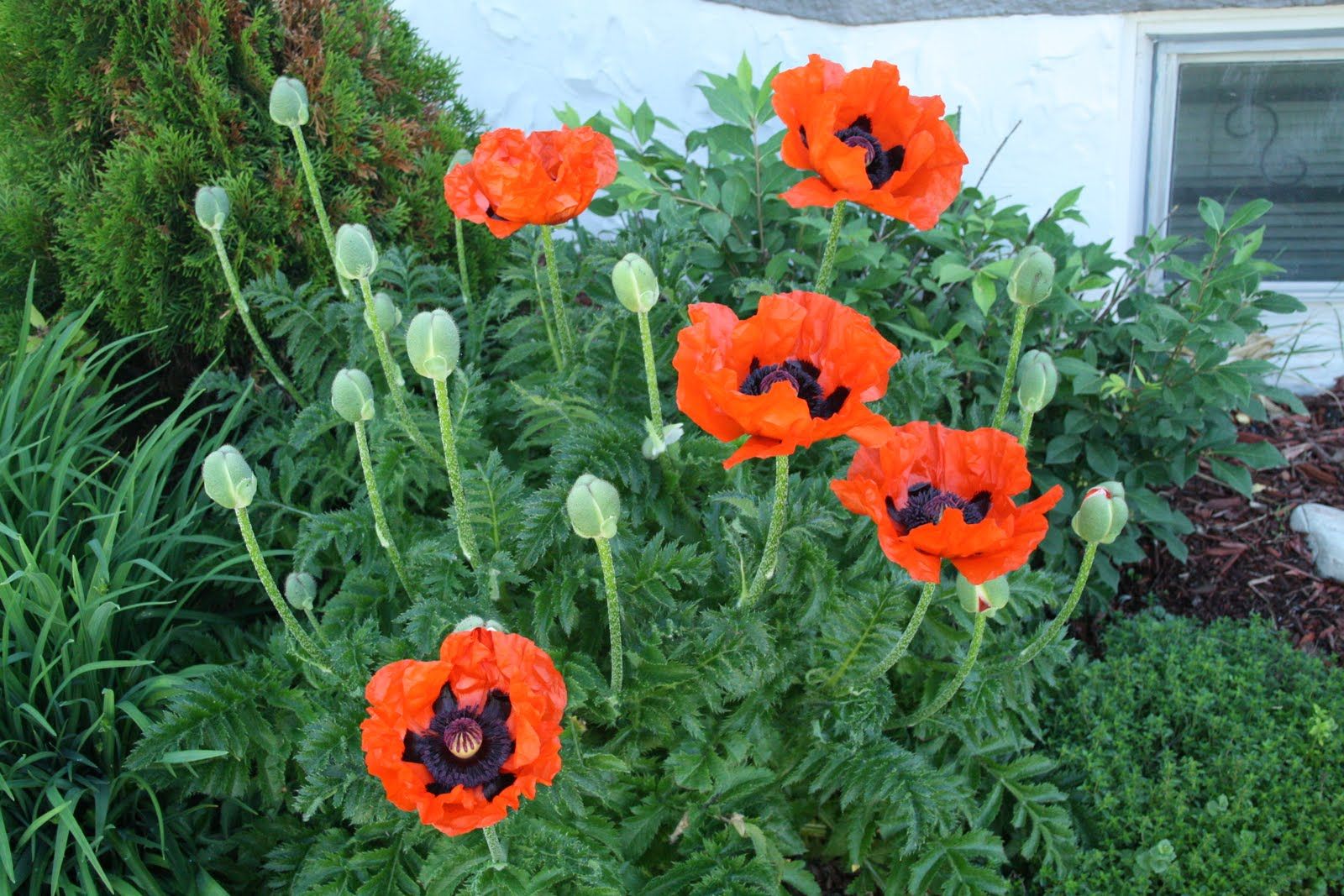Poppies burst forth in summer with papery flowers in shades of red orange yellow, pink, and white. But what do poppy leaves look like? Their foliage provides clues to identifying these popular garden plants.
Lacy and Lobed
The most recognizable feature of poppy leaves is their delicate, lacy appearance. The foliage is finely divided into segments that give it an airy, fern-like texture.
Looking closer, poppy leaves are pinnately lobed. Each leaf is comprised of oval-shaped lobes or leaflets arranged along a central stem. The lobes are toothed along the edges for an even daintier effect.
In most poppy species, the basal leaves at the base of the plant have longer petioles (leaf stems) and are more deeply lobed. Leaves higher up the flowering stems become progressively smaller and less divided. But all share the elegant, lace-like motif.
Let the Colors Shine
Poppy foliage tends towards cool blue-green or gray-green hues. These cool tones allow the saturated colors of the flowers to really stand out by contrast.
Some species like the California poppy have grayish-blue leaves complementing the orange blooms. Others, like the Shirley poppy, combine pinkish flowers with blue-tinted leaves.
A few poppies buck the trend with warmer green leaves, like the golden Welsh poppy. But most wear a cool foliage cloak that emphasizes the vibrant blooms.
A carpet of Greens
Poppies often grow in carpets, filling spaces with their lobed foliage. The leaves form loose clumps or rosettes at the base of each plant. As flowers bloom, they rise above the foliage carpet on their slender stems.
This growth habit creates a sea of poppy greens dotted with colorful flowers. The finely cut leaves have an airy quality that keeps each plant looking delicate instead of bulky.
Playing Supporting Role
Poppy foliage serves as the perfect supporting player to the flowers’ starring role. The leaves frame blooms elegantly without competing for attention.
Once flowers fade, the foliage persists to cover bare spots. Its bright green color and lacy texture adds long-lasting interest. Deadhead spent blooms regularly to keep flowers coming and maintain the tidy foliage carpet.
Winter Preparations
Poppies are herbaceous plants that die back each winter. As cool weather sets in, the foliage shrivels and plants enter dormancy. The withered leaves provide some continued visual interest and shelter for overwintering insects.
To tidy the winter garden, trim back the dead foliage after several hard frosts. Keep root systems intact to fuel new growth next spring. Mulch over dormant plants for insulation and protection.
Classic Companions
Poppies’ delicate, fern-like foliage pairs beautifully with other plants. Ferns themselves complement poppy greens nicely. Ornamental grasses echo the airy, see-through texture.
Foxgloves, catmint, coral bells, sea holly, and daisies also mingle nicely with poppies’ fine foliage. Choose companions with bolder leaves to avoid too much dainty laceiness.
Grow This Alluring Foliage
Part of poppies’ appeal lies in their elegantly cut foliage. The lacy leaves act as the perfect frame and foil for the brightly colored flowers.
To enjoy this gorgeous foliage, opt for one of these cottage garden favorites:
-
Shirley poppy – Ruffled blooms in white, pink, rose, or carmine with blue-green leaves
-
Oriental poppy – Vibrant shades atop hairy stems and leaves
-
California poppy – Cheery orange flowers over blue felt-like leaves
-
Iceland poppy – Delicate and tissue-papery blooms; grayish leaves
Let poppies lend their romantic, lacy charm to your garden this season!
This Plant Is Dangerously Addictive
FAQ
How do you identify poppy leaves?
What shape is a poppy leaf?
Which way does the leaf on a poppy go?
Are there weeds that look like poppies?
What does a poppy look like?
In nature, this annual is found in tones of pink, magenta, purple and red. Its flowers have a yellow boss and its petals have a dark blotch at the base. The plant grows to 1-1.2m high. The Poppy species that looks most like a wildflower is perhaps the Icelandic poppy.
What does a 4mm polyp look like?
Polyps are tissue growth that looks like mushroom heads with a stalk that is pendulous. It can occur in many places like nose, ear, colon, utereus. The way a polyp looks like depends on the place where the polyp is formed or located.
What color are opium poppy leaves?
Papaver somniferum – common poppy or opium poppy – produces gray-green poppy flower leaves and showy blue, pink, purple, red or white flowers in spring, according to the NC State Extension.
What does a blue poppy flower look like?
Although the papery blooms have that familiar poppy flower look, these blue flowers have petals that are quite large—up to 5 inches across. Make no mistake about it: These are difficult plants to grow from start to finish.
- A Complete Guide to Caring for Yuki Cherry Blossom Shrub - January 23, 2025
- Identifying Red Hot Poker Seeds: What to Look For When Harvesting Torch Lily Pods - January 23, 2025
- A Complete Guide to Harvesting Evening Primrose Seeds - January 23, 2025

